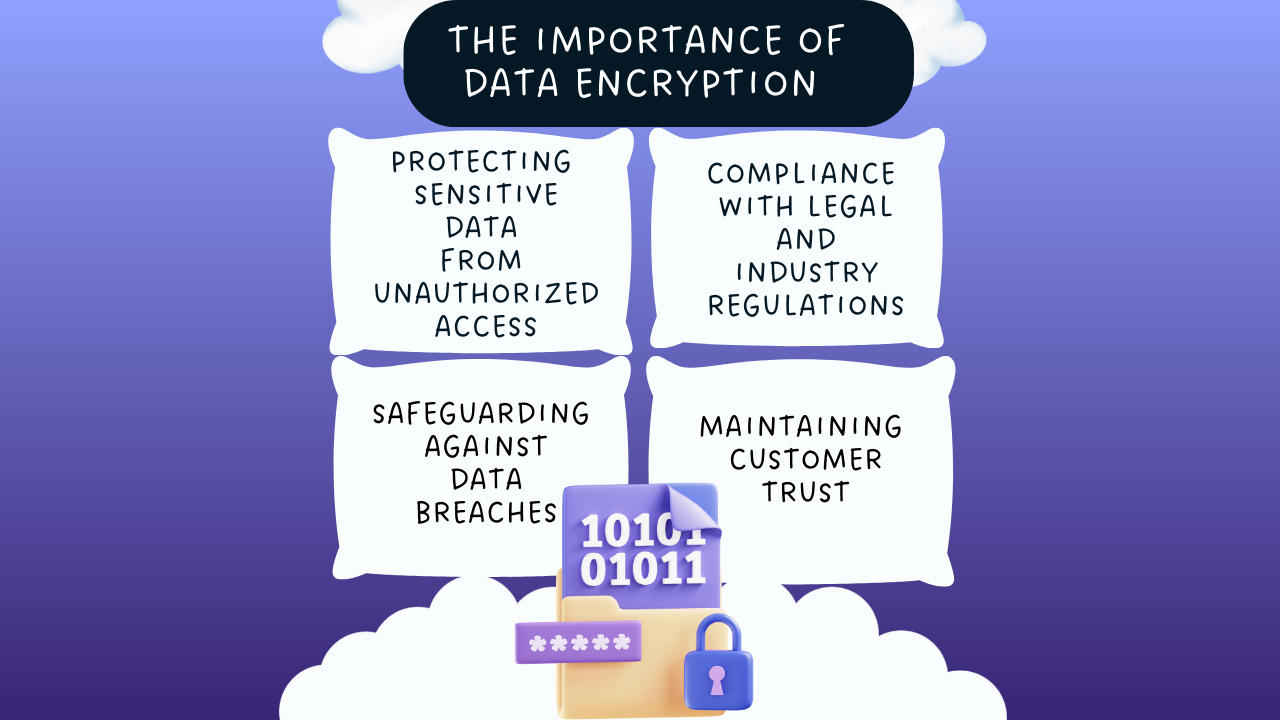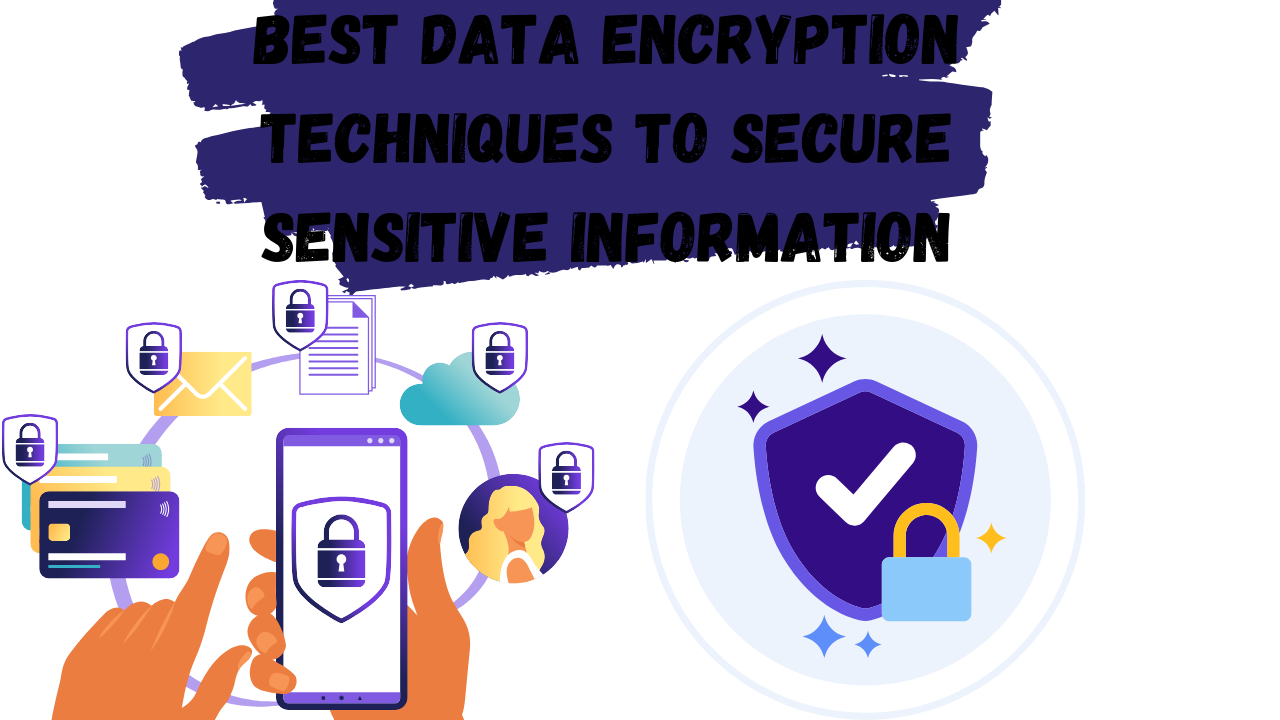Data breaches, identity theft, and cyberattacks in an increasingly digital world have become significant threats. Individuals, organizations, and companies must take greater care than ever to protect sensitive information. Whether it’s personal data, financial records, or confidential business information, encryption is a critical tool for securing this data and preventing unauthorized access.
Data encryption transforms readable information (plaintext) into an unreadable format (ciphertext), ensuring that only authorized parties can decipher it. This process is vital for safeguarding sensitive information as it moves across networks, whether for storage or transmission.
In this article, we’ll delve into the best data encryption techniques used today, explore their unique strengths, and examine why encryption is vital for protecting sensitive data from prying eyes.
What is Data Encryption?
Before diving into specific encryption techniques, it’s essential to understand what encryption entails. Data encryption is the process of converting plaintext into a coded form (ciphertext) using an algorithm and a key. This ensures that only those who possess the key can decode and access the original data. In various sectors, encryption is employed to secure emails and financial transactions, safeguard cloud storage, and protect passwords.
Encryption algorithms have two main types:
- Symmetric encryption: Uses the same key for both encryption and decryption.
- Asymmetric encryption: Uses a pair of keys, one for encryption (public key) and one for decryption (private key).
Each method has its strengths and weaknesses, and their use depends on the specific security needs and requirements.
The Importance of Data Encryption
Protecting Sensitive Data from Unauthorized Access
The primary goal of encryption is to protect sensitive data from unauthorized access. Whether data is being stored on a local device, transmitted over the internet, or shared between servers, encryption ensures that hackers or cybercriminals cannot easily access or exploit the information.
Compliance with Legal and Industry Regulations
Many industries, such as healthcare and finance, have strict regulations regarding data protection. Regulatory bodies like the General Data Protection Regulation (GDPR) and the Health Insurance Portability and Accountability Act (HIPAA) require organizations to implement encryption measures to safeguard personal and sensitive data.
Safeguarding Against Data Breaches
Even the most robust security systems can be vulnerable to breaches. Unauthorized users are unable to read or use compromised data due to the encryption serving as a final line of defense.
Maintaining Customer Trust
In an age of increasing cybersecurity threats, companies that prioritize data security and use encryption are more likely to earn the trust of their customers. Safeguarding sensitive customer information can enhance a company’s reputation and prevent reputational damage from data breaches.
Best Data Encryption Techniques
Advanced Encryption Standard (AES)
Many people use the Advanced Encryption Standard (AES) as one of their preferred encryption algorithms. Established by the U.S. National Institute of Standards and Technology (NIST) in 2001, AES has become the de facto standard for encrypting sensitive data.
Key Features of AES:
- Symmetric encryption: Uses the same key for both encryption and decryption.
- Block cipher: Encrypts data in blocks of 128 bits, with key sizes of 128, 192, or 256 bits.
- Security: Its large key sizes make AES known for its robust security, making it virtually unbreakable by brute force.
Governments, financial institutions, and major corporations use AES to encrypt sensitive data, including files, communications, and transactions. Its speed, efficiency, and strong security make it ideal for securing large volumes of data.
RSA (Rivest-Shamir-Adleman)
RSA is one of the most popular asymmetric encryption algorithms. Developed in 1977, it uses a pair of keys: a public key for encryption and a private key for decryption. RSA is widely used for securing data transmitted over the internet, such as emails, digital signatures, and online banking transactions.
Key Features of RSA:
- Asymmetric encryption: Utilizes two keys (public and private), making it ideal for secure communication.
- Security: RSA relies on the difficulty of factoring large numbers, making it highly secure.
- Digital signatures: RSA is commonly used for verifying the authenticity of digital signatures.
While RSA is incredibly secure, it’s computationally intensive, which can make it slower than symmetric encryption methods like AES. However, it remains a popular choice for encrypting small amounts of data, such as digital certificates and secure key exchanges.
Elliptic Curve Cryptography (ECC)
Elliptic Curve Cryptography (ECC) is a newer encryption method that offers high levels of security with smaller key sizes, making it faster and more efficient than traditional algorithms like RSA.
Key Features of ECC:
- Asymmetric encryption: Similar to RSA, ECC uses a pair of keys.
- Efficiency: ECC provides the same level of security as RSA but with much smaller key sizes, making it faster and more efficient.
- Use in mobile devices: ECC is ideal for mobile devices and other environments with limited processing power, as it requires less computational power.
ECC is used in various applications, including secure messaging, mobile communications, and securing websites through SSL/TLS certificates.
Blowfish and Twofish
Blowfish developed in 1993, and its successor, Twofish, are symmetric encryption algorithms known for their speed and flexibility.
Key Features of Blowfish:
- Symmetric encryption: Uses the same key for both encryption and decryption.
- Block cipher: Encrypts data in 64-bit blocks with variable key sizes (up to 448 bits).
- Free and unpatented: Blowfish is widely used because it is free, unpatented, and has no known security vulnerabilities.
Key Features of Twofish:
- Advanced version of Blowfish: Twofish encrypts data in 128-bit blocks with key sizes of up to 256 bits.
- Efficiency: Twofish is known for its speed and efficiency, making it ideal for encrypting large amounts of data.
Both Blowfish and Twofish are popular choices for securing various applications, including password management systems, disk encryption tools, and VPNs.
Triple DES (3DES)
Triple DES (3DES) is an enhancement of the original Data Encryption Standard (DES) algorithm, which was widely used in the 1970s and 1980s. 3DES was developed to address the vulnerabilities of DES by applying the encryption process three times with three different keys.
Key Features of 3DES:
- Symmetric encryption: Uses the same key for both encryption and decryption.
- Block cipher: Encrypts data in 64-bit blocks with key sizes of 168 bits.
- Security: While more secure than DES, 3DES has been gradually phased out in favor of AES due to its slower performance and shorter block size.
Despite being slower than AES, 3DES is still used in certain legacy systems and applications that require backward compatibility with DES.
Homomorphic Encryption
Homomorphic encryption is a more advanced technique that allows data to be encrypted and processed without needing to be decrypted first. This method enables computations on encrypted data, making it ideal for secure cloud computing and outsourced data processing.
Key Features of Homomorphic Encryption:
- Processing encrypted data: Homomorphic encryption allows for computations on encrypted data without exposing the original information.
- Applications in cloud computing: It is particularly useful in cloud computing environments, where data needs to be processed by third-party services without compromising security.
- Privacy-preserving machine learning: Homomorphic encryption is also being explored for privacy-preserving machine learning and secure data sharing.
While homomorphic encryption is still in its early stages, it holds immense potential for future applications in industries that require secure data processing, such as healthcare, finance, and government.
Best Practices for Implementing Data Encryption
Encryption is a powerful tool. Here are some best practices to consider:
Use Strong Keys and Algorithms
Always use modern encryption algorithms like AES, RSA, or ECC, and ensure that key sizes are sufficiently large to prevent brute-force attacks. For example, using 256-bit keys for AES or 2048-bit keys for RSA.
Implement End-to-End Encryption (E2EE)
End-to-end encryption (E2EE) ensures that data is encrypted on the sender’s side and only decrypted by the intended recipient. This method is widely used in messaging apps and email services to prevent unauthorized access to communications. E2EE protects data during transmission, ensuring that even if the communication is intercepted, the data remains secure.
Regularly Update Encryption Protocols
Encryption algorithms can become outdated as new vulnerabilities are discovered. Regularly update your encryption protocols to ensure they remain secure against the latest threats. Avoid using outdated encryption methods like DES and MD5, which have known weaknesses.
Secure Encryption Keys
Proper key management is essential for effective encryption. Store encryption keys securely, separate from the encrypted data, and use hardware security modules (HSMs) to generate and manage keys. Never hard-code keys into software or expose them in plaintext.
Encrypt Data at Rest and In Transit
Ensure that sensitive data is encrypted both when stored (data at rest) and when transmitted (data in transit). Encrypting data at rest protects it from unauthorized access, even if the storage system is compromised. Encrypting data in transit safeguards it as it moves across networks, protecting it from interception.
Educate Users on Encryption Practices
While encryption is a powerful security tool, users must understand how to use it effectively. Educate employees and users on best practices for password management, encryption, and secure data sharing. This can help prevent common mistakes that could compromise encryption efforts.
Challenges of Data Encryption
Performance Overhead
Encrypting and decrypting data requires computational power, which can slow down system performance. Organizations must find a balance between security and performance, ensuring that encryption doesn’t create a bottleneck in day-to-day operations.
Key Management
Proper key management is critical to maintaining the security of encrypted data. Losing encryption keys can render data irretrievable, while weak key storage practices can leave data vulnerable to attacks.
Compliance with International Encryption Laws
Encryption laws and regulations vary by country. Some nations have restrictions on the use of encryption, and organizations operating in multiple countries must navigate these complex legal frameworks to ensure compliance.
Conclusion
Data encryption is a fundamental tool for protecting sensitive information in a digital world. From symmetric algorithms like AES and Blowfish to asymmetric methods like RSA and ECC, encryption provides a robust defense against unauthorized access, data breaches, and cyberattacks. By implementing encryption best practices and staying up-to-date with the latest developments, organizations can safeguard their data and maintain the trust of their customers.
As encryption technology evolves, techniques like homomorphic encryption and quantum-resistant algorithms hold the promise of even greater security in the future. In an era where data is one of the most valuable assets, ensuring its protection through encryption is not just a necessity—it’s a responsibility.
FAQs
What is data encryption, and why is it important?
Data encryption is the process of converting readable data (plaintext) into an unreadable format (ciphertext) using an algorithm and key. It is important because it protects sensitive information from unauthorized access, ensuring privacy, security, and regulatory compliance.
What are the main types of data encryption?
There are two main types of encryption:
- Symmetric encryption: Uses the same key for both encryption and decryption.
- Asymmetric encryption: Uses a pair of keys (public key for encryption and private key for decryption).
What is AES encryption?
AES (Advanced Encryption Standard) is a symmetric encryption algorithm famous for its speed and robust security. It encrypts data in 128-bit blocks and uses key sizes of 128, 192, or 256 bits. Governments, corporations, and financial institutions widely use it due to its high level of security and efficiency.
How does RSA encryption differ from AES?
RSA is an asymmetric encryption algorithm, meaning it uses two keys (a public key for encryption and a private key for decryption). AES, on the other hand, is a symmetric encryption algorithm that uses the same key for both encryption and decryption.
What are the best practices for implementing data encryption?
- Using strong encryption algorithms like AES or RSA.
- Implementing end-to-end encryption (E2EE).
- Regularly updating encryption protocols.
- Securely managing encryption keys.
- Encrypting data at rest and in transit to protect it from unauthorized access at all stages.
